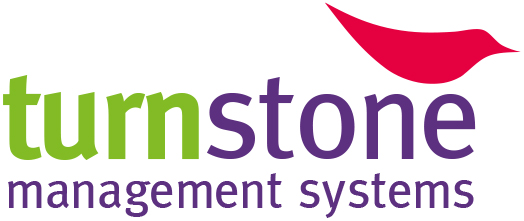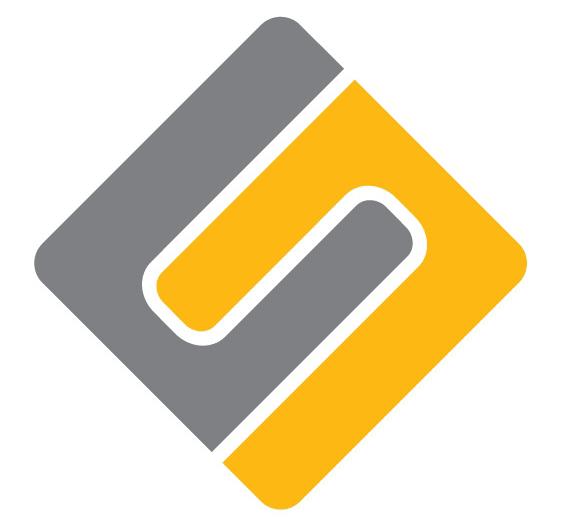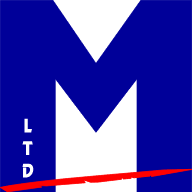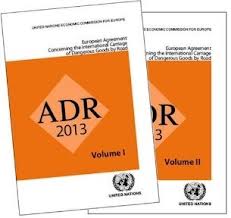Title Page
-
Customer Name
-
Conducted on
-
Prepared by
SECTION A – ESTABLISHMENT/ MANAGEMENT & ADMINISTRATION
1. Management & Administration
-
a. Does the operator manage their operator’s licence including timely addition / removal of vehicles and notification of changes / events using, when appropriate, the self-service system?
-
b. Are there contracts of employment, job descriptions, and /or a staff handbook for key employees including transport manager and drivers?
-
c. Are there specific instructions to drivers regarding observation of speed limits, use of mobile phones whilst driving, wearing of seatbelts, no smoking policy etc?
-
d. Are there records for driver induction and training, personnel and disciplinary matters?
-
e. Is there a system in place for recording / reviewing driving licence, driver CPC, ADR licence details?
-
f. Does the operator have necessary / appropriate vehicle insurance, public liability insurance, goods in transit insurance?
-
g. Is there a system in place for monitoring / reviewing insurance cover including the specification of vehicles / drivers?
-
h. Is there a system to ensure vehicles are continuously taxed and at the appropriate rate?
-
i. Is there a system for road traffic accident management including internal investigation and training?
-
j. Are there systems in place to ensure compliance with Health and Safety at Work and with Working Time Regulations?
2. Operations Management
-
a. How are transport operations organised?
-
b. Does the operator use transport software to manage vehicle operations?
-
c. Does the operator use tracker systems to record / monitor the movements of vehicles / trailers?
-
d. Does the operator have a system for driver / vehicle selection and suitability?
-
Overall assessment of compliance with the Standard
-
Recommendation / Action
SECTION B - DRIVERS' HOURS
1. Policy on Drivers Hours and Records
-
a. Does the operator have a policy that includes the proper use of tachograph recording equipment, the keeping of driver’s records and adherence to the rules relating to hours of duty and rest?
-
b. Does this policy adequately cover all aspects of tachograph use, record keeping and compliance with the regulations (EC, Domestic and Working Time)
-
c. Does the policy cover circumstances such as use of Agency drivers, malfunctioning equipment, departure from the rules due to exceptional circumstances, lost / stolen driver card etc.?
2. Person Responsible for the Management of Drivers Hours and Records
-
a. Who is responsible for ensuring compliance with the regulations (EC, Domestic and Working Time)?
-
b. Who is responsible for ensuring the proper use of tachograph recording equipment, the keeping of records and adherence to the rules relating to hours of duty and rest?
-
c. What system is in place for scheduling and monitoring drivers’ duties to take account of the relevant drivers’ hours, working time and health and safety requirements?
-
d. Who is responsible for communicating and monitoring drivers’ duties and for taking appropriate actions if schedules do not go as planned?
-
e. Are there reviews to determine the effectiveness of the scheduling system (cross reference to the enforcement history) and ascertain if appropriate action taken?
3. Management of Driver and Vehicle Records
-
a. What system is used for the management of driver and vehicle records (analogue / digital)?
-
b. Who is responsible for managing driver and vehicle records?
-
c. Is there a system for the safe but accessible storage of driver and vehicle records (including the downloaded data from driver cards and vehicle units)?
-
d. Are records kept for the required period? (1yr EU Regs; 2 yrs WTD)
-
e. Are there records of issue of record sheets (charts), print rolls or log books to drivers?
-
f. Are there records of returns of record sheets, print rolls or log books from drivers within the required timeframes?
-
g. Are there records of downloads from driver cards and vehicle units within the required timeframes?
-
h. Does the operator have a Company Card(s) which is securely stored and is used / managed appropriately?
-
i. Are there reviews to determine the effectiveness of the system? (cross reference to the compliance history and ascertain if appropriate action is taken)
4. Analysis of Driver and Vehicle Records
-
a. Who is the competent person responsible for the analysis of driver and vehicle records?
-
b. What system is used for the analysis of analogue and digital records?
-
c. If the services of an outside contractor are used, is there a contract / written agreement in place and what does it cover?
-
d. Are there appropriate / current records of regular analysis of driver and vehicle records?
-
e. Does analysis of driver and vehicle data involve matching the records against a second set of data such as timesheets or vehicle tracker?
-
f. Is there a process for identifying infringements (including missing records) and the timely actions taken against offenders including disciplinary action?
-
g. Are there appropriate records maintained of actions taken against drivers / competent persons as a result of infringements?
-
5. Monitoring and Training of Drivers / Competent Persons
5. Monitoring and Training of Drivers / Competent Persons
-
a. Is there a system to ensure that drivers (including agency drivers) and competent persons are trained and that knowledge is monitored and refreshed / updated as necessary?
-
b. Is the training provided by a competent body / person and are appropriate records maintained?
-
Overall assessment of compliance with the Standard:
-
Recommendation / Action:
SECTION C – VEHICLE WEIGHTS
1. Company Policy on Vehicle Weights and Loading
-
a. Is there a policy on vehicle weights, load distribution and load safety that describes the duties and responsibilities of all relevant persons?
-
b. Does the policy adequately cover all aspects of the operation including vehicle types and loads carried?
2. Management of Vehicle Weights
-
a. Who is responsible for managing, monitoring and taking action in respect of vehicle weights and loading?
-
b. Does the responsible managing person have the required knowledge and authority to ensure vehicles are correctly loaded and operate within the required weight limits?
-
c. Are records kept to identify and control the weight of vehicles sent on the road including vehicle tare weight, vehicle maximum weight, load capacity, customer manifests, etc.?
3. Suitably trained responsible person(s)
-
-
a. Are the persons responsible for vehicle loading and weights appropriately trained?
-
b. Are there complete records of any training provided to responsible persons such as drivers, loaders and dispatchers?
-
c. Is the operator and the responsible person(s) aware of the impact of badly loaded vehicles from road safety, fair competition and road damage perspectives?
-
d. Is the operator and the responsible person(s) aware of enforcement and regulatory actions that can be taken if badly loaded vehicles are encountered at the roadside including fixed penalty notices, prohibitions and referral to the Transport Regulator?
4. Check weigh facilities
-
a. Are there internal facilities/equipment available for the check weighing of vehicles (including on board weighers)?
-
b. Does the operator instruct drivers to check weigh at Departmental or public weighbridges?
-
c. Are records kept of check weighing and of actions taken if vehicles are found to be overweight?
-
d. Are the arrangements for check weighing suitable to ensure compliance with the regulations?
5. Records of vehicle weighing by enforcement agencies
-
a. Has the operator kept records of vehicles weighed by Enforcement Agencies and the outcomes? (cross reference to the enforcement history)
-
b. Are there records of investigations into the cause of vehicle overloads and the actions taken to prevent repetition?
6. Actions to improve compliance
-
a. Has the operator a system of ongoing training and are appropriate records kept?
-
b. Where a responsible person fails to follow instructions regarding vehicle weights and loading, is there a disciplinary process in place?
-
c. Are there appropriate records of investigations and actions taken including, if appropriate, further training?
-
Overall assessment of compliance with the Standard:
-
Recommendation / Action:
SECTION D MAINTENANCE
Section D (1) - Maintenance Facilities / Maintenance Contract
1. Vehicle Maintenance (contracted to third party)
-
a. Is there a Maintenance agreement / contract in place and with TRU?
-
b. What does the agreement/contract cover?
-
c. Are all specified vehicles/trailers included?
-
d. What records are maintained?
-
e. Are schedules adhered to?
-
f. What arrangements are there in place for audits or reviews?
-
g. Who is responsible for maintenance, records, adherence and review?
2. Vehicle Maintenance (In house)
-
a. Does the company have its own maintenance agreement in place and with TRU?
-
b. What does the agreement/contract cover?
-
c. Are all specified vehicles/trailers included?
-
d. What records are maintained?
-
e. Are schedules adhered to?
-
f. What arrangements are there in place for audits or reviews?
3. Undercover Accommodation
-
a. What type of accommodation is available?
-
b. Is it sufficient and suitable for the size of the fleet?
4. Tools and equipment to suit fleet
-
Is there sufficient supply of tools for the size of fleet?
5. Under vehicle inspection facilities
-
a. What facilities are avilable?
-
Are these sufficient for the size and type of fleet?
6. Suitable and adequate lighting
-
Is there lighting provided to aid inspections?
7. Access to brake tester, headlamp alignment tester and engine exhaust emission tester
-
a. Does the operator have/ have access to this equipment?
-
b. Are there records of tests?
-
b. Is the underside of the vehicles clean?
8. Access to steam or pressure under-vehicle washing facilities
-
a. Does the operator have/ have access to this equipment?
-
b. Is the underside of the vehicles clean?
9. Safe Working Environment
-
a. What condition is the facility in?
-
b. Is it clean, tidy and free from hazards?
10. Appropriately trained personnel
-
Are staff/providers appropriately trained/qualified to undertake, supervise, manage and/or deliver the maintenance requirements?
-
Overall Assessment of compliance with the standard
-
Recommendation / Action
SECTION D (2) REGULAR SAFETY INSPECTIONS, SERVICING AND MAINTENANCE
1. Safety Inspections Programme
-
a. Are safety inspections schedules as a standalone inspection?
-
b. Does the schedule correspond with the safety inspection intervals declared to TRU (if applicable)?
-
c. Do safety inspections complement the vehicle servicing/maintenance/annual test/tacho calibration schedules?
-
d. What planning system is in place?
-
e. Who is responsible for management, adherence and review?
2. Inspection scope and content
-
a. Are safety inspection report forms used?
-
b. Is the scope and content of the safety inspection sufficient?
-
c. Are there separate arrangements for inspection of ancillary equipment (on board weighers, loading straps/chains)?
3. Safety Inspection schedules
-
a. Are programmed safety inspections delivered on time?
-
b. If schedules aren’t adhered to, how long are these delayed?
-
c. What condition are vehicles in when inspected?
-
d. Are the programmed intervals appropriate?
-
e. Is there evidence that safety inspection schedules are reviewed/amended to take account of issues arising from inspections, maintenance or driver walk round checks?
4. General maintenance/servicing/vehicle testing schedules
-
a. Is there an effective system in place?
-
b. Are relevant maintenance, servicing and test dates being met?
-
c. Are the outcomes of maintenance, servicing and/or vehicle tests monitored and action taken if necessary?
-
d. Does the vehicle first time test pass history indicate appropriate systems and processes are working?
5. Appropriate records and actions taken
-
a. Are records kept of maintenance, servicing and safety inspections, including any remedial action taken before a vehicle is returned to operation?
-
b. Are these records kept for a minimum of 15 months?
-
c. Who decides to remove/return a vehicle to operation?
-
d. Is this decision reviewed at a managerial level?
6. Action due to Enforcement Encounters
-
a. Are records kept of remedial action taken as a result of enforcement encounters including vehicle retests?
-
b. Are enforcement findings investigated and any actions taken documented (including disciplinary action if found necessary)?
-
c. Is compliance monitored to prevent re-occurrence?
7. Tachograph calibration / inspection
-
a. Is there a system in place for tachograph calibration, inspection and repair (including seals damaged as a result of gearbox/clutch repair)?
-
b. Which approved tachograph centre (s) is used?
-
c. Are appropriate records kept?
Section D (3) Daily Walk Round Check
1. Is there a documented policy and procedures
-
Do these indicate when the check is carried out/who carries it out/how the check is recorded and that it covers the minimum inspection requirements?
2. Are staff suitably trained and aware of their responsibilities?
-
Enquire if the person carrying out the task understands they are certifying the vehicle as roadworthy to the limits of the inspection and the driver is legally responsible for certain defects.
3. Documented evidence that demonstrates compliance with the set procedure, policy and instructions
-
Review evidence/documentation to ensure the system functions and relevant issues are flagged up and audit these to ensure appropriate corrective action is undertaken.
4. Evidence that the person(s) responsible have been trained in the procedure, policy and/or instruction they are to carry out.
-
Review evidence to ensure not only is the person responsible for undertaking the daily walk round is trained but also staff who are delegated with the responsibility for taking decisions as to whether a vehicle can be taken onto the road when issues have been flagged on the walk round.
5. Audit trails
-
Review to identify issues highlighted during walk round checks, safety inspections, roadside checks or annual tests and follow these through the process to confirm if corrective action was taken. Cross checks can be undertaken with tacho charts etc to verify vehicle usage.
Overall assessment of compliance with the Standard:
-
undefined
Recommendation / Action:
-
undefined
SECTION E - TRANSPORT MANAGER
1. Signed Declaration
-
Is there a signed declaration by the Transport Manager? Is the Transport Manager on the Operator Licence?
2. Contract of Employment
-
Are there contracts of employment in place for all employees?
3. Proof of Contract - Contract of Employment, PAYE details etc
-
Is there evidence of this?
4. Internal
-
Effectively and continuously perform their Transport Manager role for the operator
-
Be resident in a European Union country
-
Arrangements made to ensure drivers comply with drivers’ hours and tachograph rules and speed limits
-
Arrangements made to ensure the vehicles are maintained properly, including the inspection of vehicles at the appropriate time and the action taken to remedy defects.
-
Reporting and recording of vehicle defects by driver
-
Method of compilation and accuracy of all records, which must be kept for a period of not less than 15 months.
-
Arrangements to ensure that the vehicle/s are not overloaded
-
Ensuring authorised vehicles will be kept at the authorised operating centre(s) when not in use.
-
Where appropriate, notifying the Agency (in writing) of all prosecutions and convictions concerning the operator, the drivers and the Transport manager within 28 days of the court hearing.
5. External
-
Effective and continuous management responsibility for the transport activities of the operator
-
Be of good repute and be resident in a European Union country
-
Have a contract with the operator that specifies the tasks they perform as Transport Manager. Descriptive list of what job entails should be in the contract of employment, outlining roles and responsibilities.
-
Only work for maximum of 4 operators with a combined maximum fleet of 50 vehicles. Individual Member States do have freedom to lower the 4/50 maximum.
-
Be responsible to the operator and not anyone else.
-
Have a contract with the operator that specifies the tasks they perform as Transport Manager.
-
Make arrangements to ensure:<br>Drivers comply with drivers hours and tachograph rules and with speed limits; Vehicles are maintained properly, including the inspection of vehicles at appropriate times and action taken to remedy defects.
-
Method of compilation and accuracy of all records, which must be kept for a period of not less than 15 months.
-
Arrangements to ensure that the vehicle/s are not overloaded
-
Ensuring authorised vehicles will be kept at the authorised operating centre(s) when not in use.
-
Where appropriate, notifying the Agency (in writing) of all prosecutions and convictions concerning the operator, the drivers and the Transport manager within 28 days of the court hearing.
-
Any role in verifying contracts and documents, basic accounting and safety procedures.
6. Transport Manager
-
Is the Transport Manager specified on other Operators Licence?
-
Name(s) of other Operators
-
Number of Vehicles per licence
-
Any other paid work commitments












